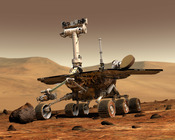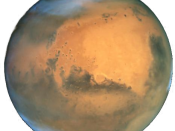The knowledge of Mars has been an incoherent one for the people of Earth, having acquired the first hard data just half a century ago, when telescopes were made accurately enough to determine whether there is the likeliness of any life on the red planet, as well as the structure and surface details of Mars. Recent technology enabling humans to collect first hand data from Mars, such as the Pathfinder, has given the opportunity for scientists to further delve into the past, present, and future history of mars.
Now that landing on Mars has become possible, and advancements in technology have enabled humans to obtain more information from the red planet, NASA and Washington, DC have announced several new missions that it plans to send out to Mars within the next decade, to further learn about any possibility of life on the red planet, as well as many factors of the environment of Mars, including plant-life and liquid on the surface.
The Mars Exploration Rovers is the next mission set out to land on Mars to collect information. ?Identical twin rovers? will land at two separate sites and set out to determine the history of the climate and water on the planet where conditions may once have been very favorable? (www.spaceref.com). Due to an increased amount of technology, the rovers plan to use ?drop, bounce, and roll technology? (www.southpole.com) to ?evaluate the composition and morphology of rocks and soils at a broad variety of scales, extending from those accessible to the human eye to microscopic levels? (www.spaceref.com). Scientists have chosen two landing sites for the rovers, particularly near rocks and frozen liquids seen through images in order to be able to put these textures through more intensive examinations.
The Mars Reconnaissance Orbiter is a mission set to go out in...


